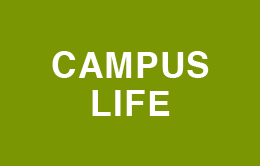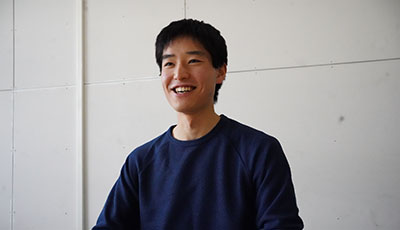
Connecting multiple destinations with a limited number of vehicles
-Finding optimal solutions to complex situations with the help of machine learning
| Department of Modern Mechanical Engineering (CSE Graduate School) Master’s program 1st year |
| Yosuke Yamaguchi |
| Jun Ohya Laboratory |

Tackling vehicle allocation and routing by means of deep reinforcement learning
Q Tell us about the research you are currently working on.
I am working on the problem of allocating and routing vehicles using deep reinforcement learning. The allocation and routing of vehicles involves calculating the best routes when connecting multiple destinations with multiple vehicles. How to connect five destinations with one vehicle is easy to calculate, but when you have to connect thousands of destinations with multiple vehicles, the number of possible solutions is huge, making it difficult to come up with an optimal solution.
To solve this problem, I resort to deep reinforcement learning in my research. Deep reinforcement learning is a type of machine learning that combines deep learning and reinforcement learning. Deep learning is the basis for image recognition and natural language processing, ChatGPT being the typical example. It uses neural networks to learn patterns behind a multitude of data and to make predictions based on one’s intended purpose.
On the other hand, reinforcement learning is a learning method in which a machine selects an action for a given situation and receives a reward in case of positive results. Machines learn by repeatedly trying different actions and getting rewards. By using deep reinforcement learning, we can obtain increasingly more accurate approximate solutions in a short time.
Being a new field, you are in a position to learn in a cutting-edge environment.
Q Tell us about what you find particularly difficult and interesting about your research.
Deep reinforcement learning is a relatively new field and, due in part to the recent AI boom, researchers around the world are busy publishing one paper after another on this subject. As a result, it is very difficult to demonstrate the novelty, originality and superiority of one’s research. On the other hand, the appeal of conducting research in this field is that it allows you to collaborate with researchers who are at the forefront of such a new field.
Q Tell us how you came to choose the Ohya Laboratory.
When I first entered university, I was interested in humanoids and chose the Department of Modern Mechanical Engineering. Later, during a lecture called “Mechatronics Lab,” I learned that mechanical engineering combines various technologies, from hardware to software.
When I learned that at the Ohya Laboratory they research software-oriented technologies like image processing, VR and machine learning, I decided to join.
Deep learning and reinforcement learning are very exciting fields and in the future I would like to work on implementing such technologies across society and using them to solve social issues. After graduation, I want to engage in not only basic research but also in applied research. When looking for a job, I will consider a career in research and development.

